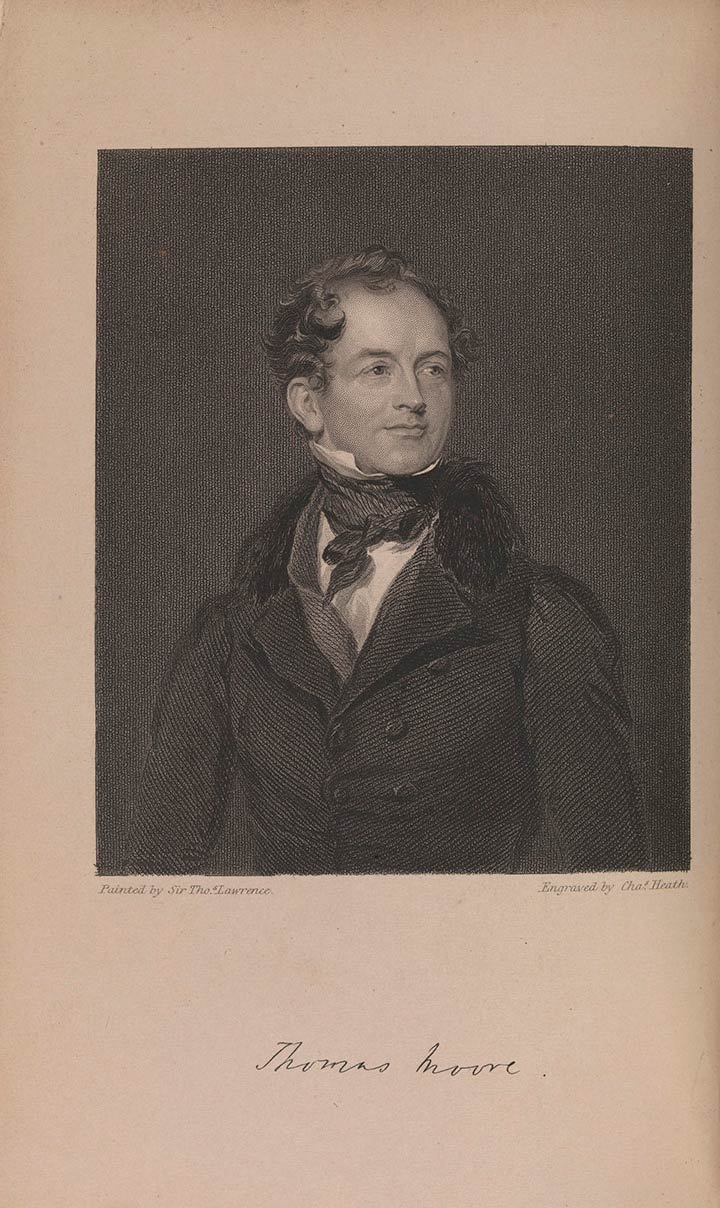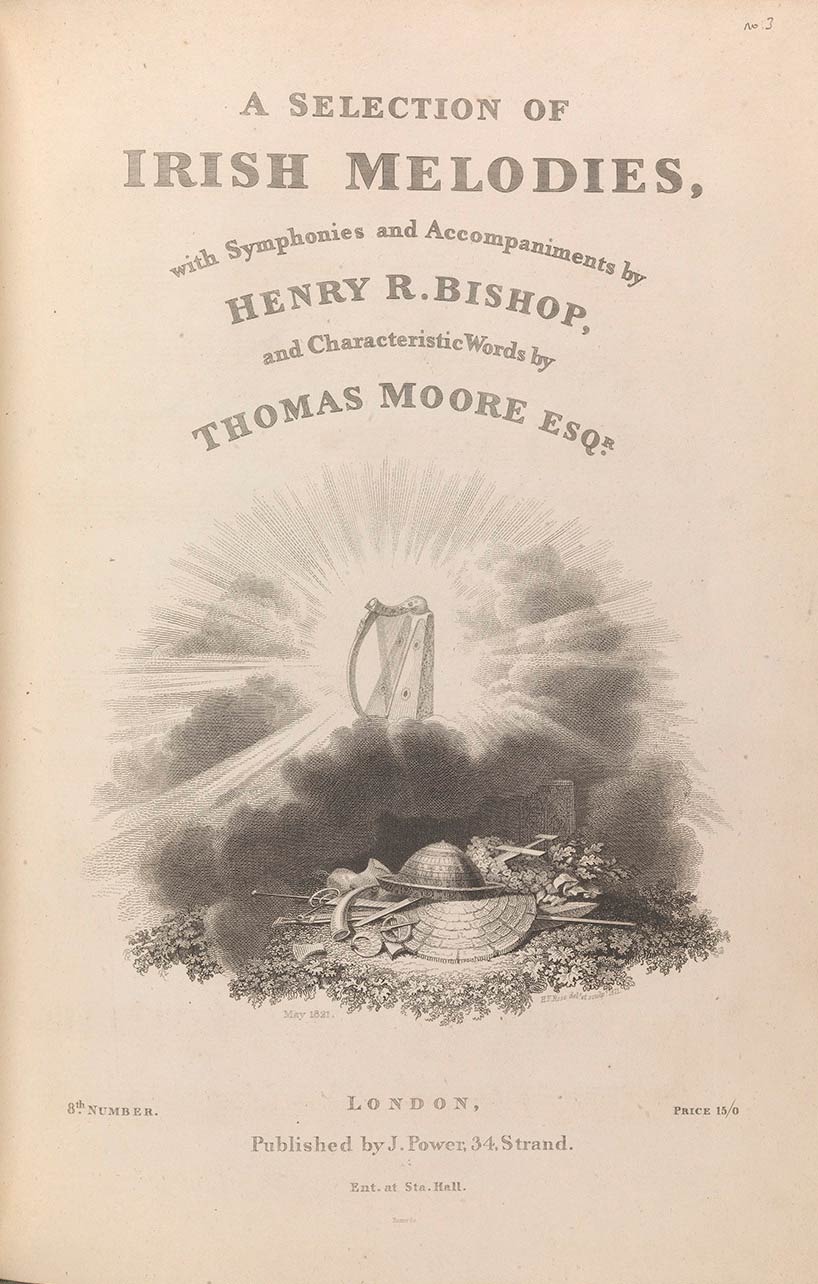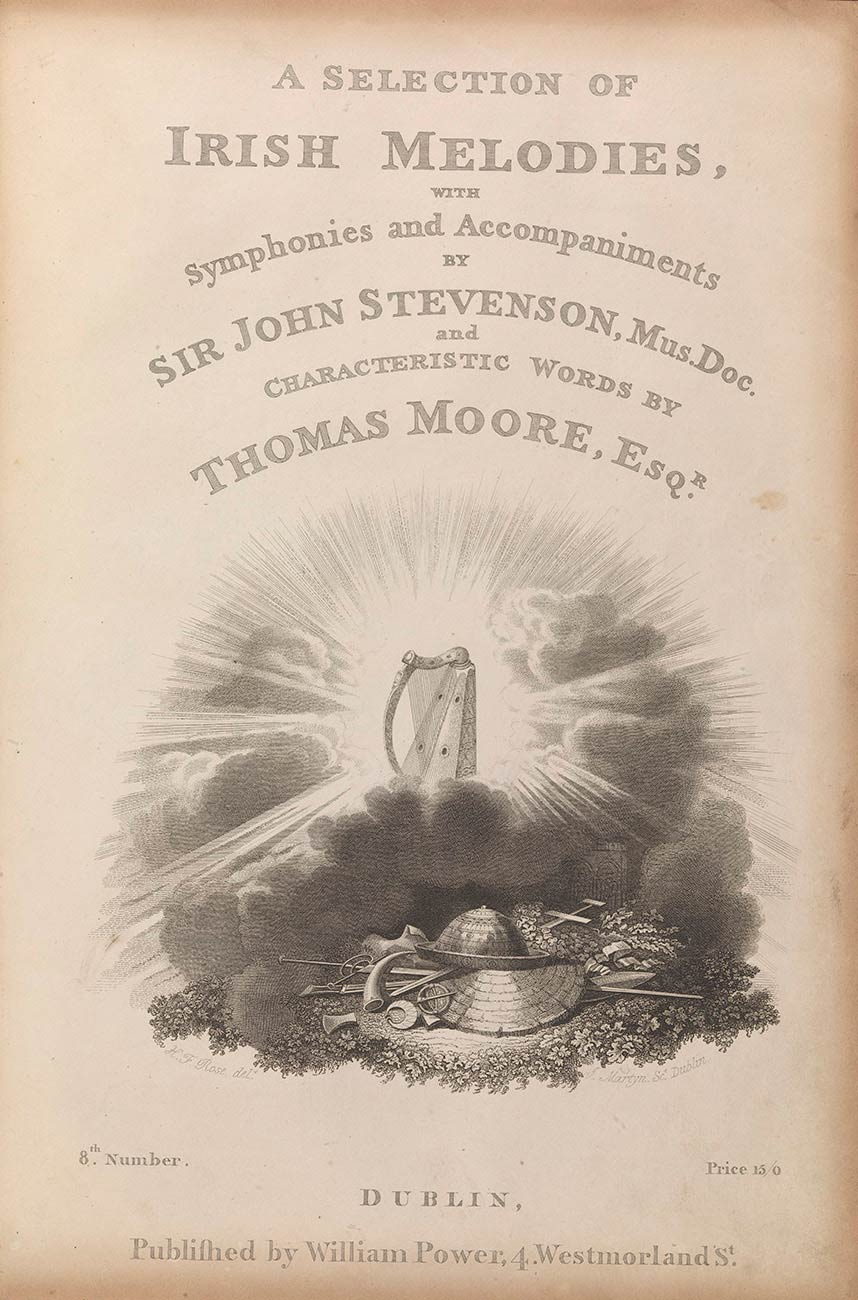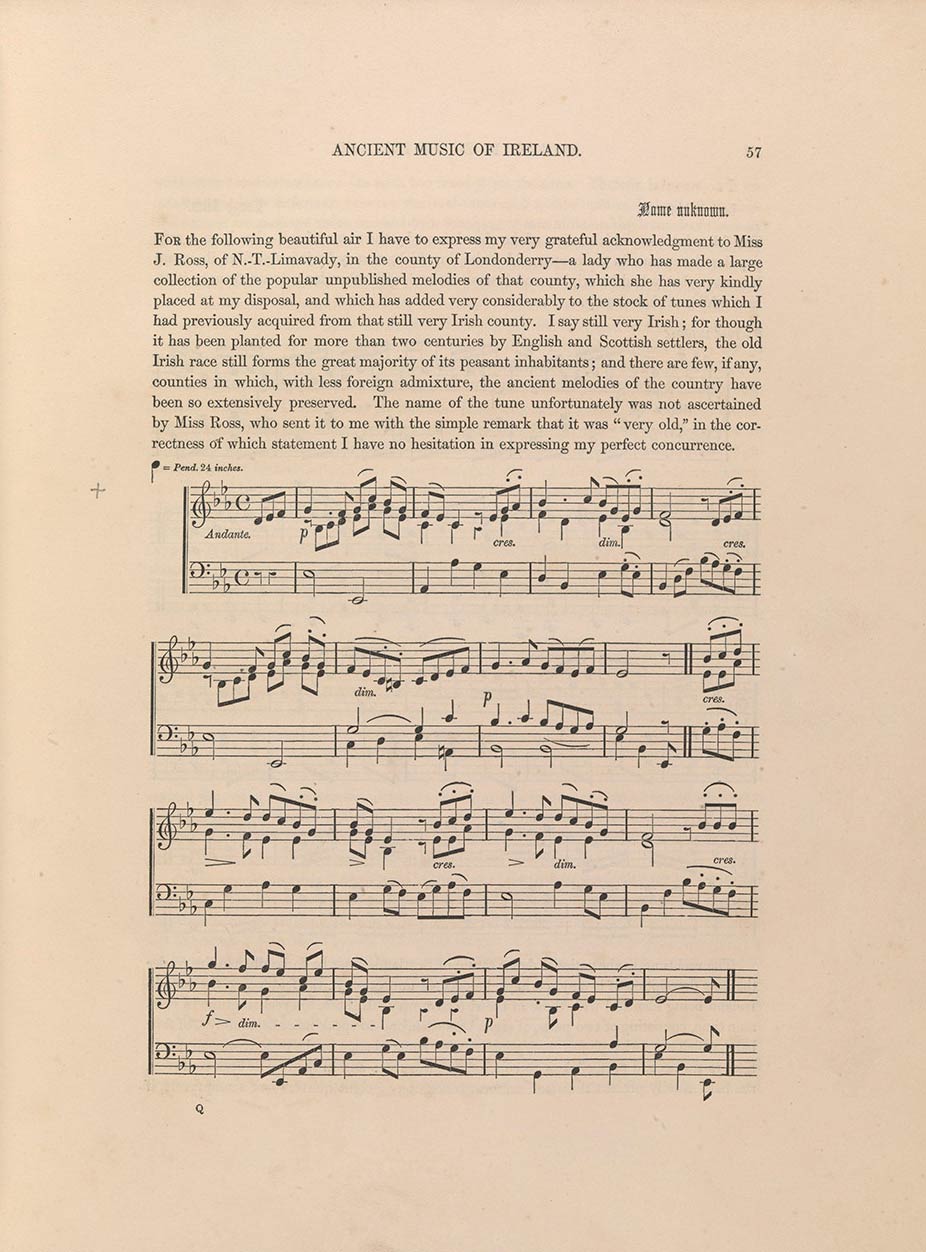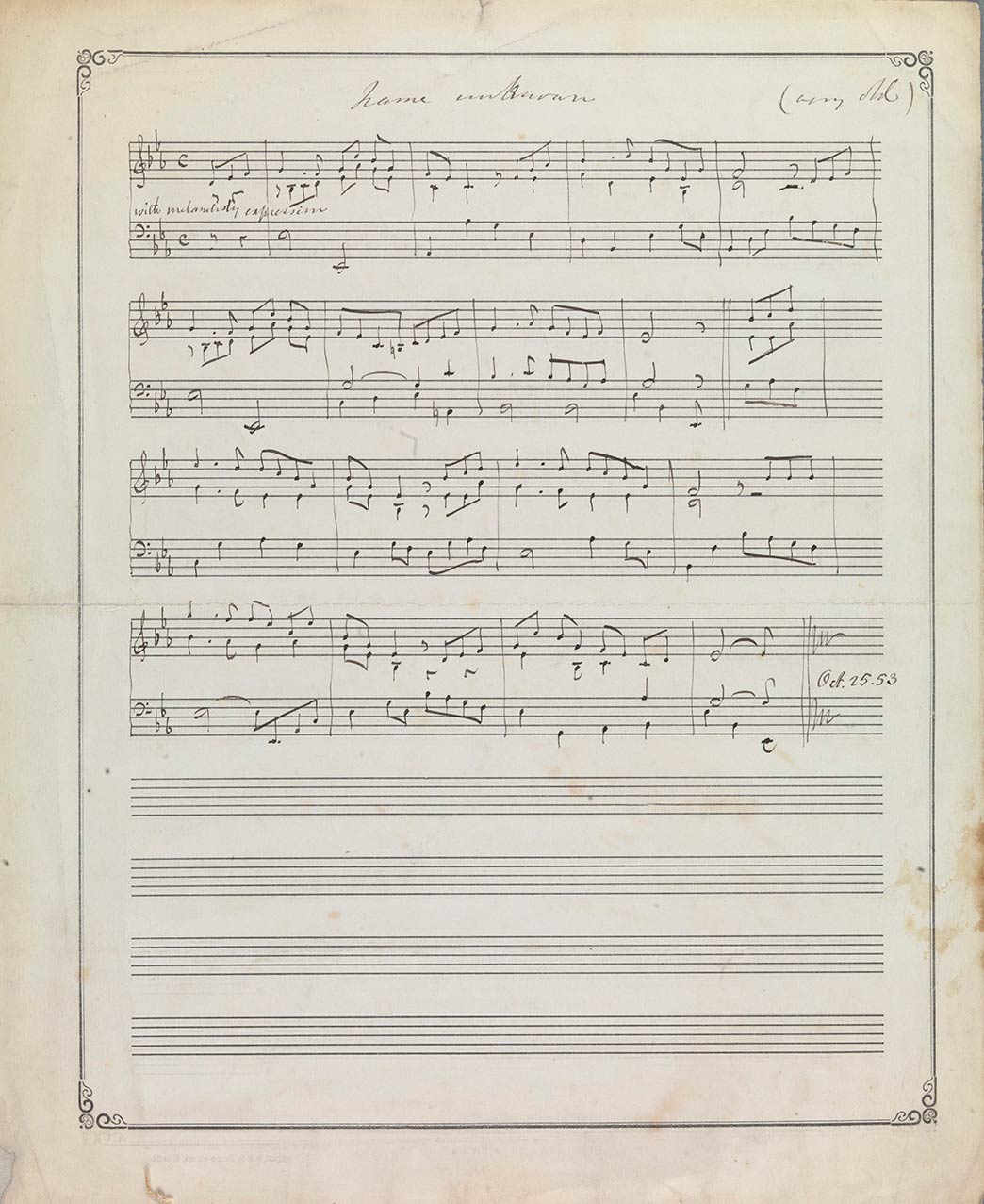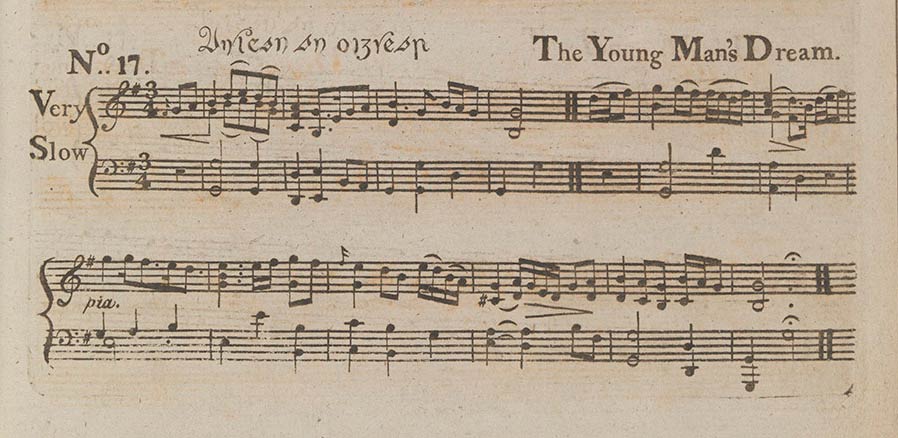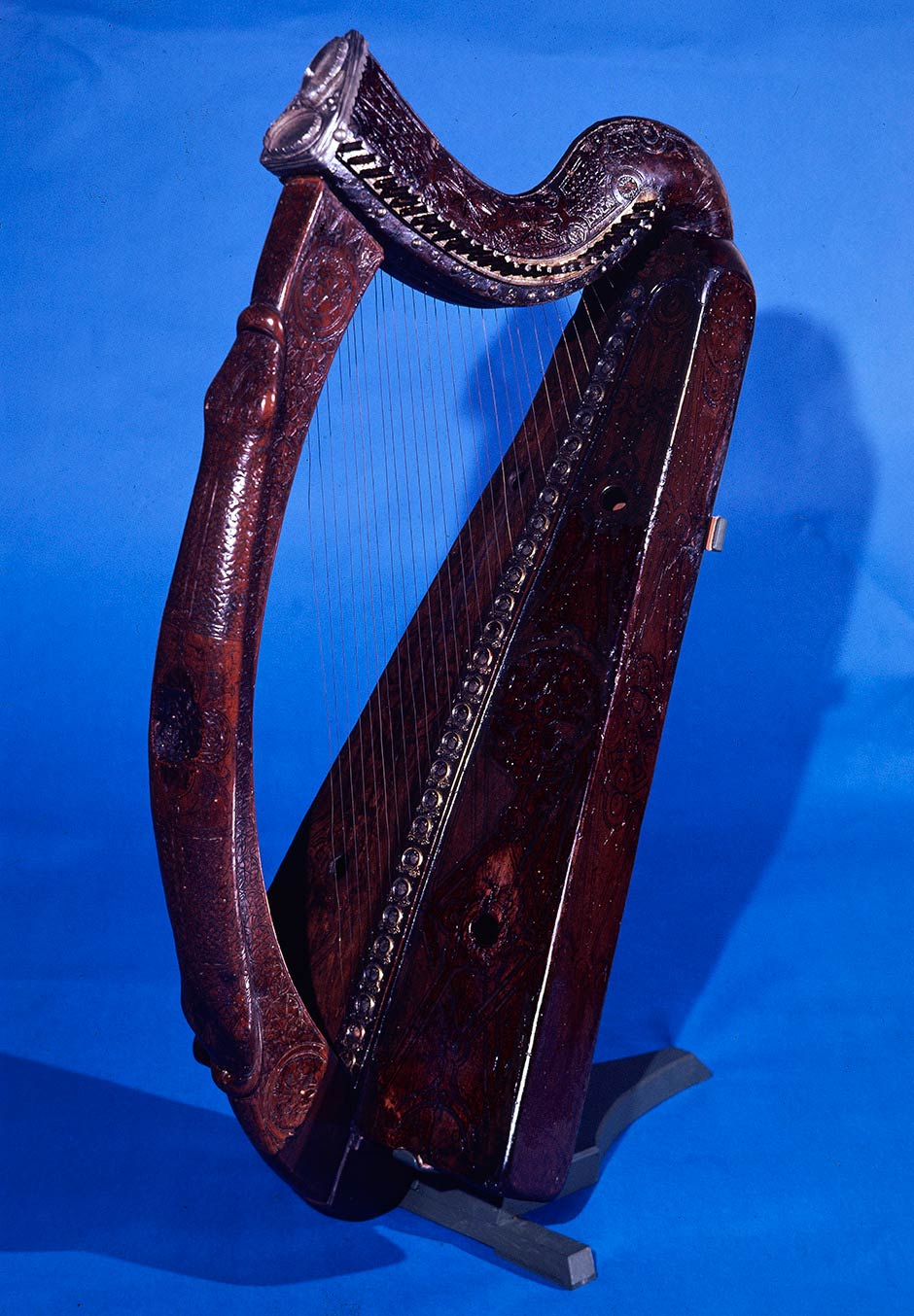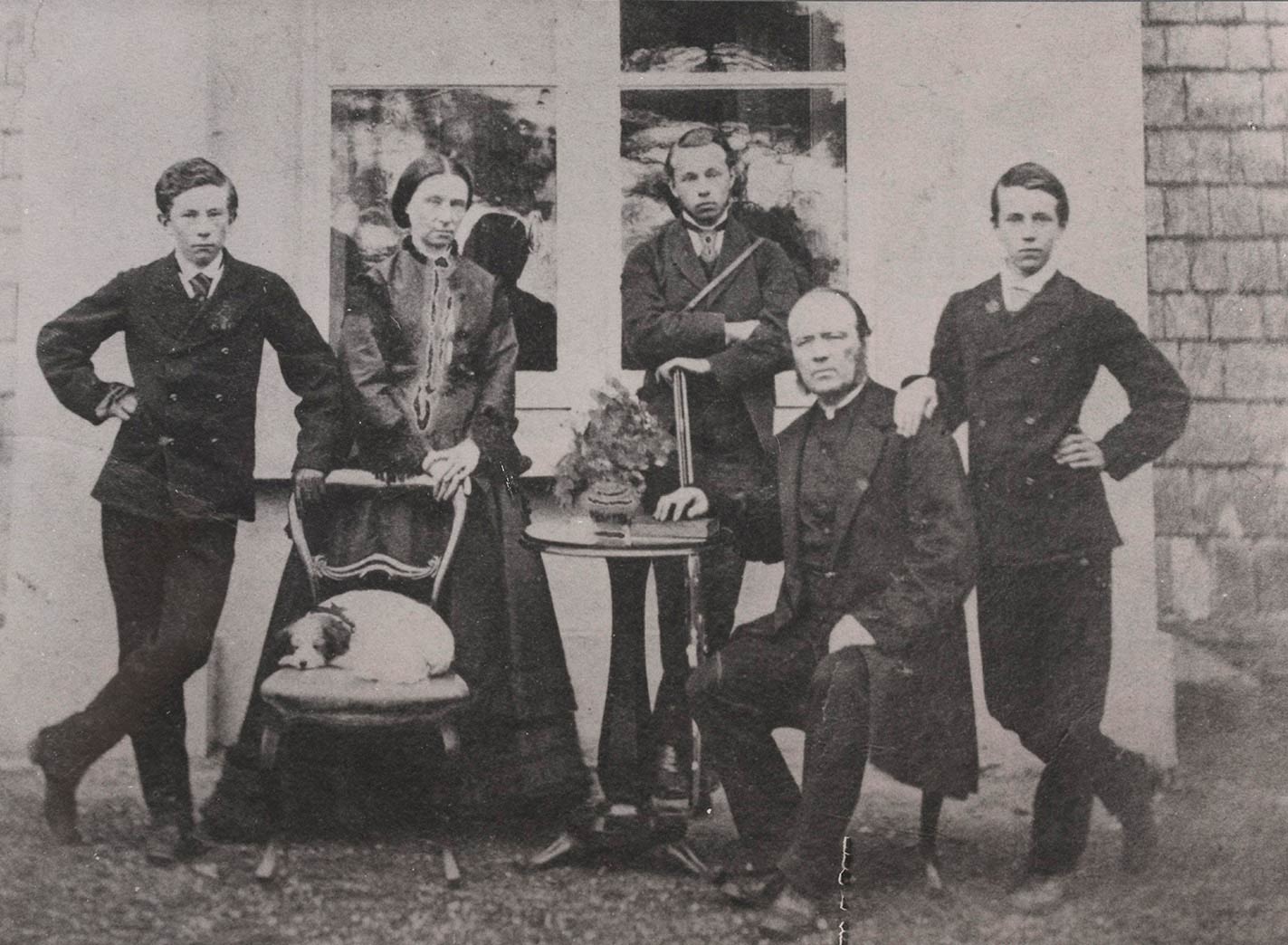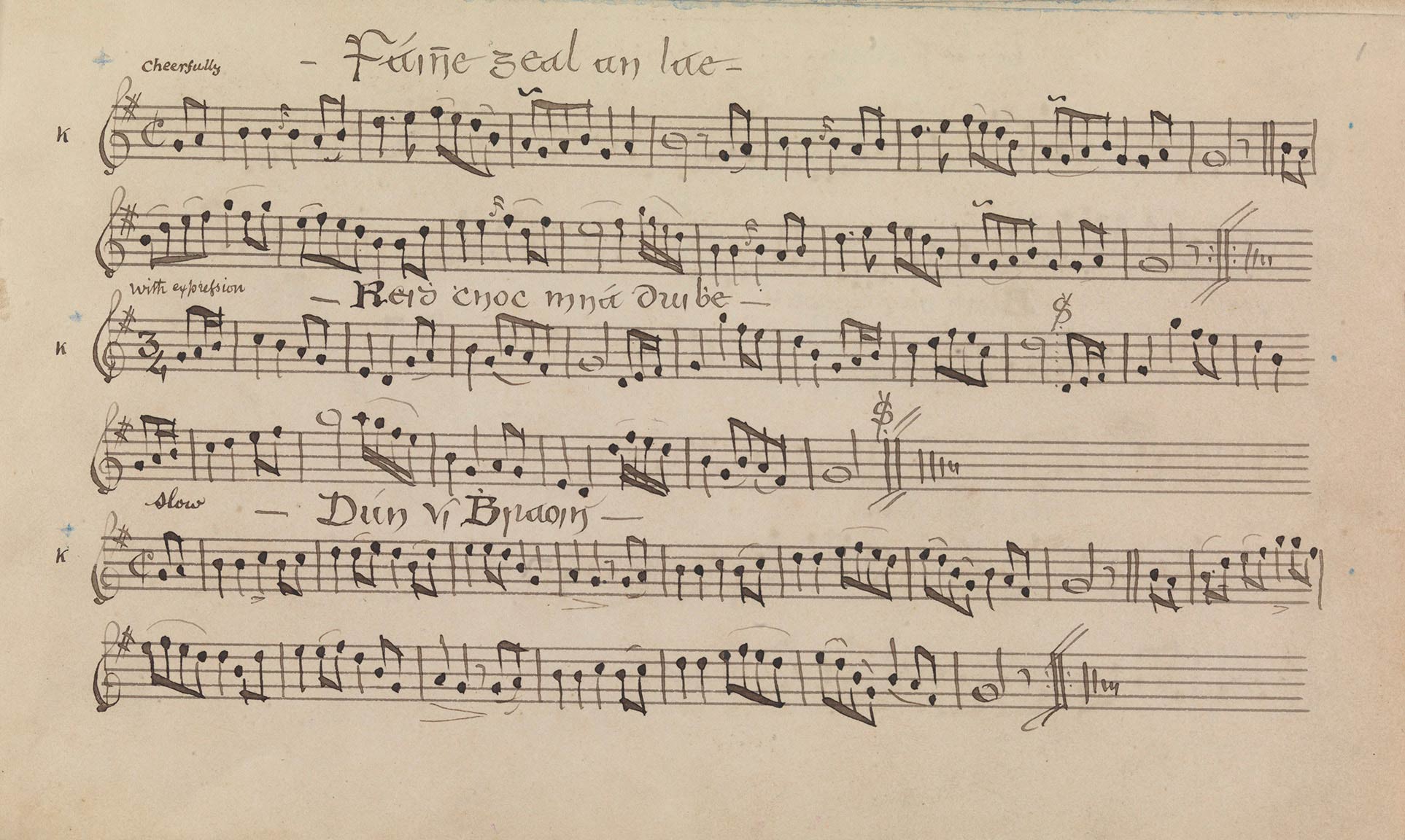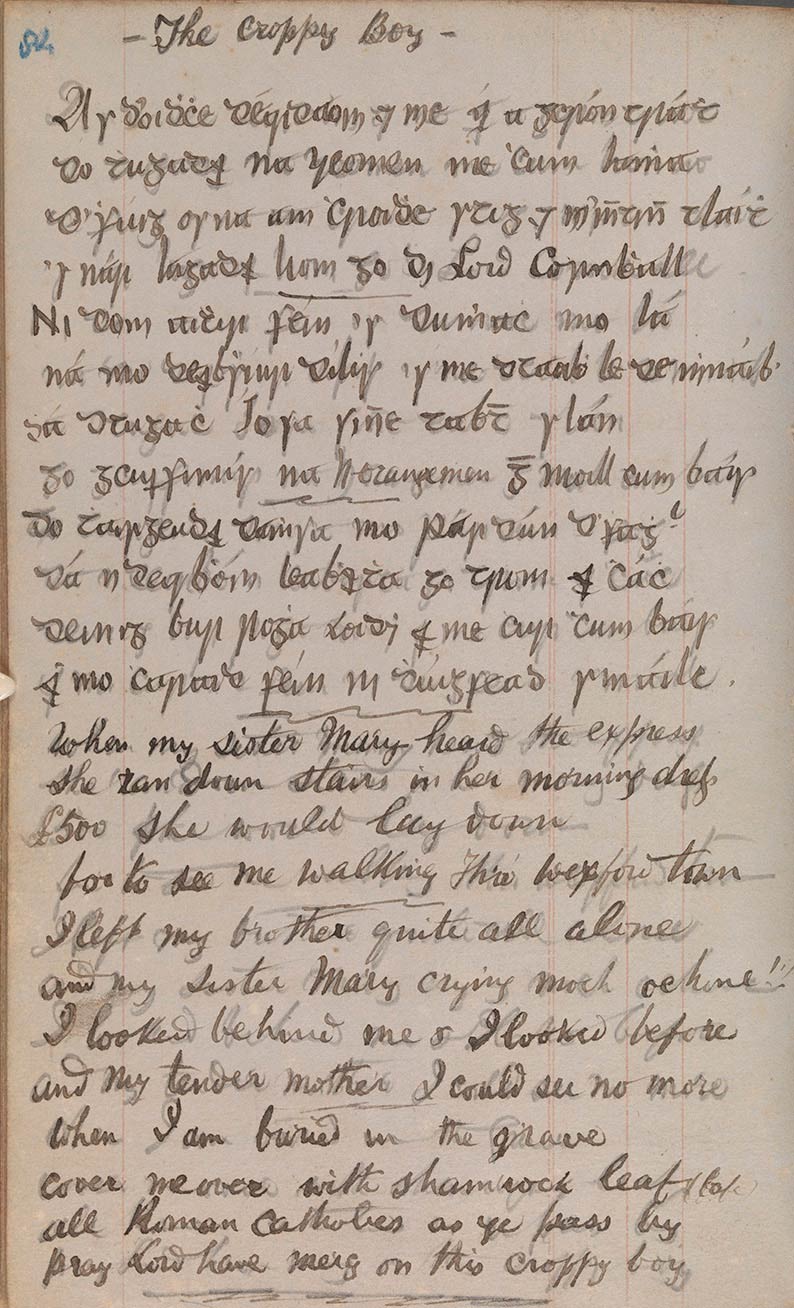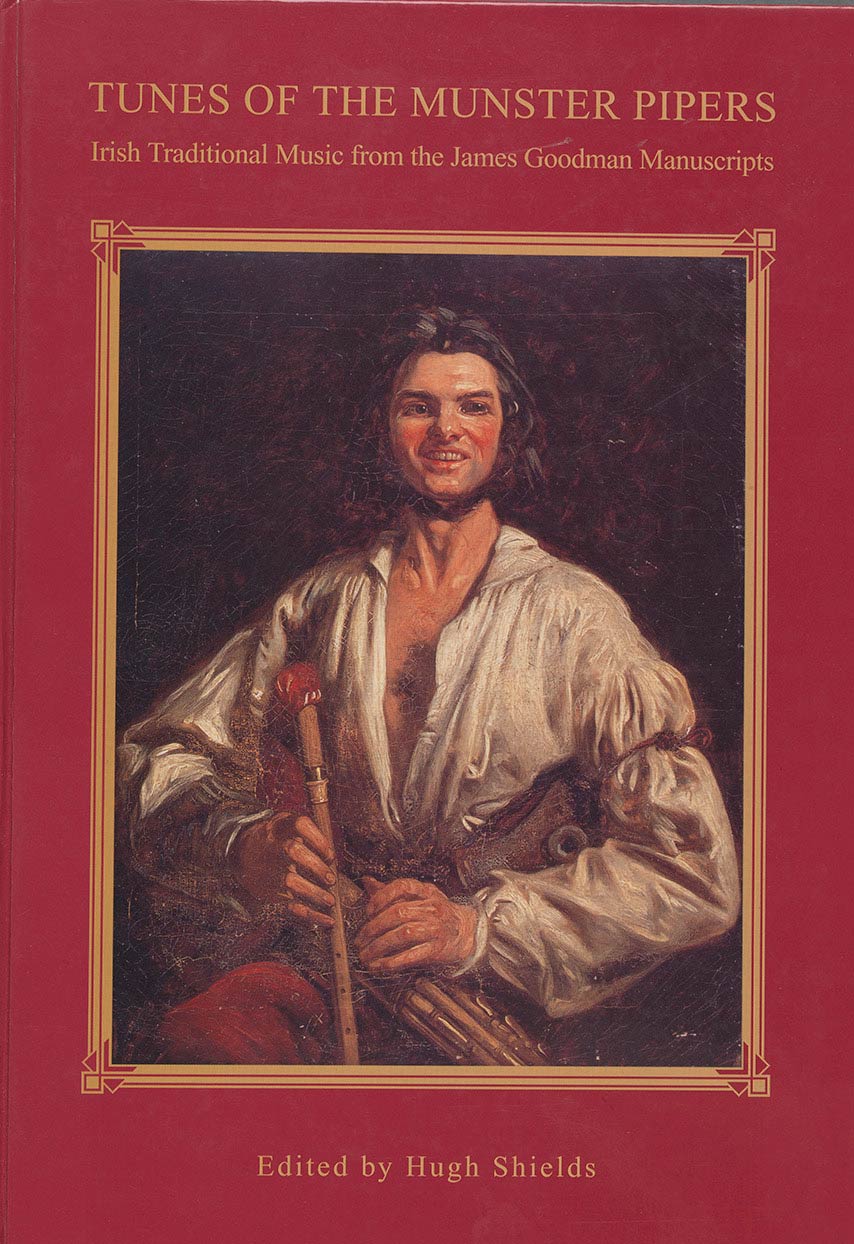Irish Folk Music and Song
Edward Bunting's A general collection of the ancient Irish music (Dublin, 1796) has been described as 'the most seminal and influential publication in the history of Irish music'. Thomas Moore used Bunting as a source for many of his Irish melodies, and in the course of the 19th century several collectors followed Bunting's example in transcribing traditional tunes directly from folk musicians. George Petrie published his collection in 1855, including the tune generally known as the 'Londonderry air'. James Goodman transcribed over 2000 tunes from a variety of sources, many of them from local musicians in Cork and Kerry. Such collectors made a vital contribution towards saving an essential element of Ireland's musical heritage for future generations.
Thomas Moore: Poetical works
(London, 1840)
E.t.1
When Thomas Moore was invited by the music-publishing brothers James and William Power to produce a collection of songs based on Irish airs, he turned to Edward Bunting's A general collection of the ancient Irish music (1796) for some of his source material, supplying new texts for the airs he selected. Piano accompaniments were added by Sir John Stevenson. The first two numbers of the Irish melodies were published in 1808, and proved highly popular. On the strength of their success Moore was offered a contract for further selections, giving him his first regular income. The music was printed first by James Power in London, who then sent the plates to William in Dublin.
Thomas Moore: A selection of Irish melodies, 8th number
(London, 1821)
OLS X-1-976 no.3
After the seventh number of Irish melodies was published, an acrimonious legal dispute between the Power brothers brought the customary arrangement between them to an end. Thereafter, any further publications in the series were to be issued solely by James Power in London, using accompaniments by then-fashionable English composer Henry Rowley Bishop. The eighth number was published in London in 1821, with accompaniments by Bishop.
Thomas Moore: A selection of Irish melodies, 8th number
(Dublin, 1821)
OLS X-1-976 no.4
Soon after the eighth number of the Irish melodies was published in London in 1821, a pirated edition appeared from William Power's press in Dublin, with accompaniments by Moore's previous collaborator, Sir John Stevenson.
While Moore's Irish melodies can be viewed simply as attractive drawing-room songs, the social and political context of the time gives their composition deeper significance. By blending Irish airs with lyrics which frequently carried a patriotic subtext, Moore introduced an element of nationalist sentiment to the fashionable salons in which his songs were chiefly performed.
George Petrie: Ancient music of Ireland, vol. 1
(Dublin, 1855)
Gall P.31.36
George Petrie (1790-1866) was an artist and antiquary as well as a collector of folk music, and was instrumental in setting up the Society for the Preservation and Publication of the Melodies of Ireland in 1851. Its only publication was Petrie's The ancient music of Ireland, which included an untitled air now widely known as the 'Londonderry air'.
The 'Londonderry air'
TCD MS 3562, f 89v
This tune was supplied to Petrie by Miss Jane Ross of Limavady who described it as 'very old'; it was harmonised (by Petrie or his daughter Maryanne) for publication. The extended phrase lengths and wide compass of the melody suggest that it had undergone some development from its original form, bringing it closer to art song than folk tune.
Edward Bunting: A general collection of the ancient Irish music
(Dublin, 1796)
R.a.37
Edward Bunting (1773-1843) began transcribing tunes directly from elderly players at the Belfast Harp Festival in July 1792, and gathered further material on visits to Tyrone, Derry and Mayo. The General collection of the ancient Irish music, his first published collection containing 66 airs, was a ground-breaking attempt to preserve a vulnerable element of Ireland's musical heritage from imminent loss, and as such has been described in the Dictionary of Irish Biography as 'the most seminal and influential publication in the history of Irish music.'
Tune no. 17, 'Aislean an oigfear / The young man's dream', displays some similarity to the 'Londonderry air' and may derive from a common source.
Trinity College harp
The Trinity College harp is the earliest surviving example of the type of instrument played in Ireland from medieval times until its decline the early 19th century. It is thought to date from the 14th or 15th century, and features a soundbox carved from a single block of willow, supporting 30 brass strings. The player used long fingernails to pluck the strings, producing a resonant, bell-like tone.
The harp was originally an aristocratic instrument, used to play sophisticated art music for entertainment at the courts of the principal Gaelic families. As the harpers gradually lost their traditional source of patronage, they began to adopt a more popular repertoire to appeal to a broader audience. Consequently the Irish harp is now more often regarded as a folk instrument.
Goodman family photograph
TCD MS 4717/71
James Goodman followed his father and elder brother into the ordained ministry of the Church of Ireland, serving in parishes in Co. Cork from 1852 until his death. He grew up speaking both Irish and English, and developed a passionate interest in Irish traditional music. He learned to play the flute and the uilleann pipes, and began to transcribe folk tunes from the local musicians he encountered. In 1879 Goodman was appointed Professor of Irish at the University of Dublin, a post he held alongside his ministry in Co. Cork.
Goodman collection
TCD MS 3194
It appears that Goodman's collecting activities ceased once he became rector of Abbeystrewery (near Skibbereen, Co. Cork) in 1867, but in the preceding years he compiled fair copies of the music he had collected from various sources over the previous two decades. Out of more than 2000 tunes, probably fewer than half were taken directly from oral tradition; the rest were transcribed from existing manuscript and printed sources. Many of the tunes were given to Goodman by the piper Tom Kennedy, a Protestant convert who came to assist at the Church Missionary Society's centre in Ventry, Co. Kerry.
Goodman collection
TCD MS 11320
After Goodman's death four volumes of tunes were presented to Trinity College Library. Two further volumes have come to light in recent years, containing words for some of the tunes. These have been donated by his descendants to supplement the collection.
Hugh Shields (ed.): Tunes of the Munster pipers
(Dublin, 1998)
P-MUS 780.141 N8.1
The contents of the Goodman manuscripts have reached a wider audience in recent years through publication, performance and recording. The tunes which Goodman indicated he had collected from oral tradition were included in the first of two volumes published by the Irish Traditional Music Archive (ITMA) under the title Tunes of the Munster Pipers. Digital copies of the tunes have also been made available on the ITMA website (www.itma.ie). These resources have made the tunes more easily accessible to traditional musicians, leading to live performances and a recent recording of selected tunes by Mick O'Brien, Emer Mayock and Aoife Ní Bhriain.

